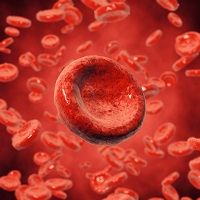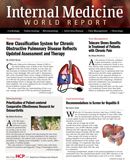Publication
Article
Internal Medicine World Report
Hemoglobin A1c Levels Act as an Independent Gauge for Coronary Artery Disease
Author(s):
For individuals without diabetes, hemoglobin A1c (HbA1c) levels not only predicted the prevalence of coronary artery disease (CAD), but also anticipated its severity, according to research published in Mayo Clinic Proceedings.

For individuals without diabetes, hemoglobin A1c (HbA1c) levels not only predicted coronary artery disease (CAD)’s prevalence, but also its severity, according to research published in Mayo Clinic Proceedings.
For their study, researchers from the Sanjay Gandhi Postgraduate Institute of Medical Sciences in India originally recruited 1,897 patients who underwent coronary angiography. However, only 1,141 individuals were examined, as patients with diabetes and/or an HbA variant were eliminated from the study.
Among the included participants, investigators divided the patients into 4 groups based on their HbA1c levels, including HbA1c, less than 5.5%, 5.5% to 5.7%, 5.8% to 6.1%, and HbA1c levels greater than 6.1%.
Moreover, the authors documented information regarding the participants’ body mass index (BMI), hypertension status, blood pressure, smoking status, resting and fasting blood glucose level, low-density lipoprotein cholesterol levels, renal function, and glomerular filtration rate.
A CAD diagnosis, which was determined by a panel of cardiologists, involved a 50% or greater narrowing of the major coronary vessels. Furthermore, CAD’s severity and complexity were identified by the presence of diseased vessels, presence of left main and/or triple vessel disease, in addition to SYNTAX scores.
Based on their analysis, 905 patients (79.3%) were determined to have CAD. Additionally, the researchers discovered an association between increased HbA1c levels and CAD occurrences (62.8%, 75.3%, 85.3%, and 89.8% in patients with HbA1c levels <5.5%, 5.5%-5.7%, 5.8%-6.1%, and >6.1%, respectively).
“We found that compared with patients with HbA1c levels less than 5.5%, the odds ratios of occurrence of CAD with HbA1c levels of 5.5% to 5.7%, 5.8% to 6.1%, and greater than 6.1% were 1.8 (95% CI, 1.2-2.7; P=.006), 3.5 (95% CI, 2.3-5.3; P<.001), and 4.9 (95% CI, 3.0-8.1; P<.001), respectively,” the authors wrote.
The authors also mentioned that “with increasing HbA1c levels, a significant increase was noted in the mean number of diseased vessels (P≤.001) and in the occurrence of left main and/or triple vessel disease (P≤.001)”.
In addition, the researchers noted a disproportionate number of individuals with high HbA1c readings were older, overweight, and afflicted with hypertension.
While researchers noted a correlation between random and fasting blood glucose levels and HbA1c levels, they reported no association between fasting blood glucose level and CAD occurrence.
“These results imply that HbA1c not only is a marker of chronic dysglycemia but also could be used as an independent predictor of CAD and its severity even in nondiabetic individuals. Measurement of HbA1c levels may improve risk assessment in nondiabetic patients,” the writers penned.
Since the risk of a CAD is pronounced at a prediabetic HbA1c level of 5.7%, researchers recommended prediabetic patients and individuals with glucose control issues should be directed to aggressive coronary risk factor modification and management resources.




